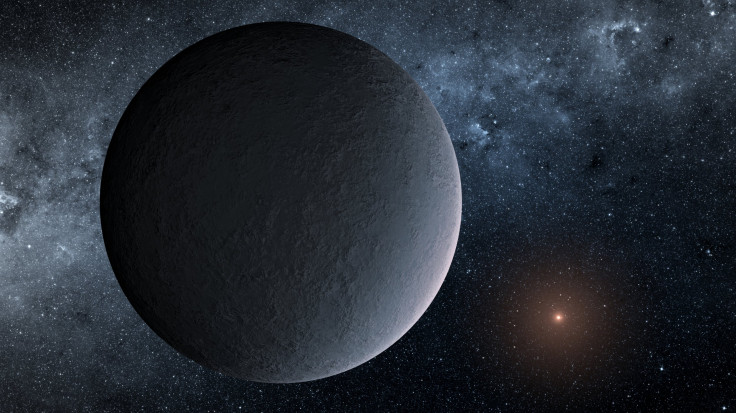Astronomers Discover Earth’s Cold Twin Orbiting A Faint Star 13,000 Light-Years Away

Astronomers using the Korea Microlensing Telescope Network (KMTNet) and NASA’s Spitzer Space Telescope have discovered an Earth-sized planet orbiting a star at the same distance our planet orbits the sun. The discovery, announced Wednesday, was made using a technique called gravitational microlensing, wherein the gravity of a foreground star is used to detect objects orbiting a background star.
This “iceball” planet, which goes by the clunky name of OGLE-2016-BLG-1195Lb, is the lowest-mass planet ever detected using microlensing.
Read: Want To Make A Planet More Livable? Add Some Volcanoes
“One of the problems with estimating how many planets like this are out there is that we have reached the lower limit of planet masses that we can currently detect with microlensing,” Yossi Shvartzvald, a postdoctoral fellow at NASA's Jet Propulsion Laboratory in Pasadena, California, and lead author of a study published in the Astrophysical Journal Letters, said in statement.
The object this planet orbits is so small that scientists aren’t even sure that it’s a star. At less than 8 percent the mass of the sun, it could very well be a brown dwarf — objects that have the awkward distinction of being too large to be called planets and too small to be categorized as stars — even though they form the same way as stars do. These failed stars are extremely dim as compared to their hotter counterparts, but their heat signatures light up when viewed in infrared images.
“Alternatively, it could be an ultra-cool dwarf star much like TRAPPIST-1, which Spitzer and ground-based telescopes recently revealed to host seven Earth-size planets. Those seven planets all huddle closely around TRAPPIST-1, even closer than Mercury orbits our sun, and they all have potential for liquid water,” NASA said in the statement. “But OGLE-2016-BLG-1195Lb, at the sun-Earth distance from a very faint star, would be extremely cold — likely even colder than Pluto is in our own solar system, such that any surface water would be frozen.”
Since the planet lies far beyond the so-called “Goldilocks zone” of its parent star, and is covered in hundreds of miles of ice, life as we know it most likely does not exist on it.
“This discovery provides more evidence that planets are not only very common but also very diverse," Shvartzvald told CNN. “They are able to form in strange environments very different from what we're accustomed to on Earth.”
© Copyright IBTimes 2024. All rights reserved.






















